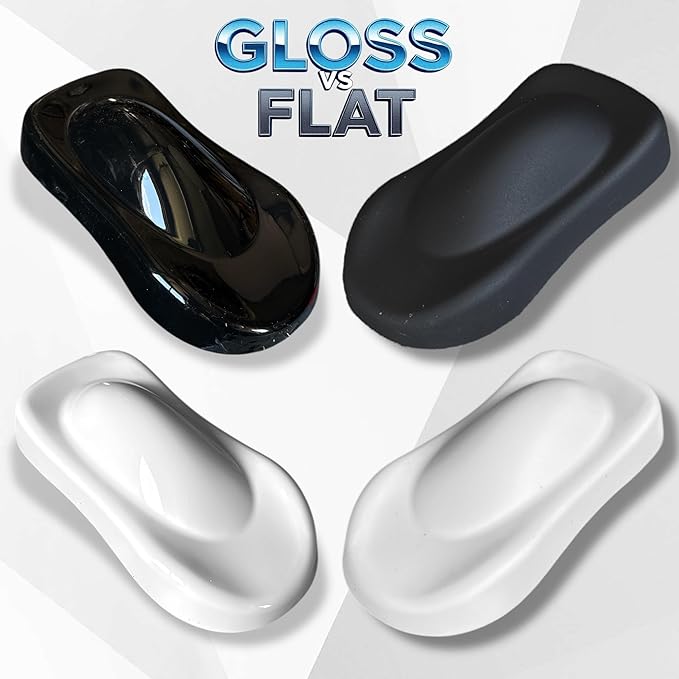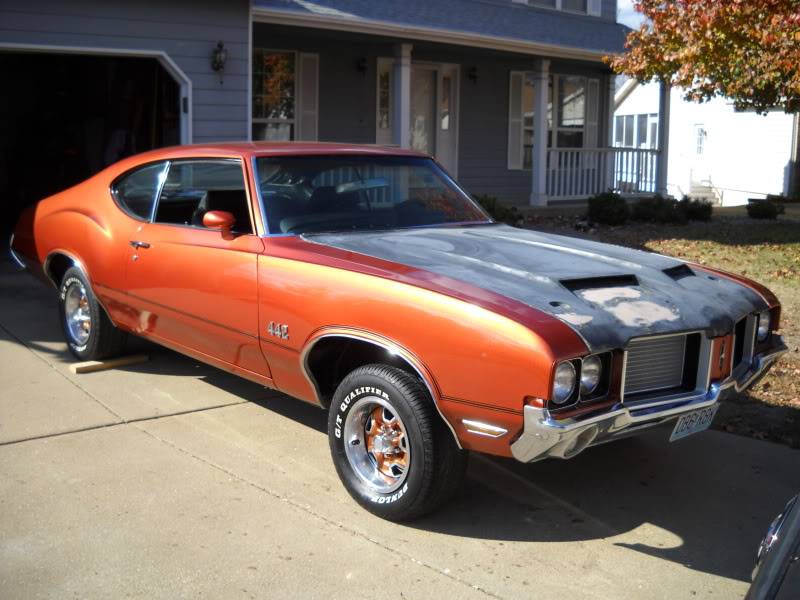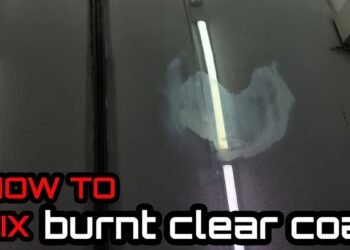Are you wondering if you can put a clear coat over flat black paint? Maybe you love the deep, muted look of flat black but want to add extra protection or even a subtle shine.
The good news is—you absolutely can. Applying a clear coat over flat black paint not only protects your work but can also change the way your paint looks and feels. Whether you want to keep that matte finish or add a satin or glossy touch, understanding how clear coats interact with flat black paint is key to getting the perfect result.
In this guide, you’ll discover simple tips and tricks to help your flat black paint last longer and look exactly how you want it. Ready to take your flat black paint to the next level? Keep reading!
Flat Black Paint Basics
Flat black paint has a unique appeal that stands out in many applications. It offers a smooth, non-reflective finish that absorbs light rather than reflecting it. This quality gives flat black surfaces a deep, rich look that many find attractive and modern.
Understanding the basics of flat black paint helps in choosing the right approach for its use and maintenance. Knowing its features and benefits ensures better results, especially when applying a clear coat over it.
Characteristics Of Flat Black
Flat black paint has a matte finish with no shine or gloss. It hides imperfections well because it does not reflect light. The texture feels smooth but slightly rough compared to glossy paint. This paint type uses special pigments that absorb light, giving it that dull look. It is less prone to showing fingerprints and smudges. However, flat black can be harder to clean than glossy surfaces.
Common Uses And Benefits
Flat black paint is popular in automotive and home decor fields. It is often used on cars, furniture, and appliances to create a sleek, modern style. The paint’s non-reflective surface helps reduce glare in bright environments. It also provides a subtle backdrop that highlights other design elements. Flat black paint is beneficial for hiding surface flaws and scratches. Its low sheen helps maintain a clean, uniform appearance over time.

Credit: www.limelinepaintsupply.com
Types Of Clear Coats
Clear coats protect flat black paint and change its look. Different clear coats offer various finishes and protection levels. Choosing the right type depends on the desired appearance and durability. Understanding clear coat types helps achieve the best results on flat black paint.
Glossy Clear Coat
Glossy clear coats create a shiny, reflective surface. They fill tiny bumps in flat paint for a smooth finish. This type makes flat black paint look bright and polished. It also adds strong protection against scratches and UV rays. Glossy clear coats suit projects needing a vibrant, eye-catching look.
Satin And Matte Clear Coats
Satin and matte clear coats keep the paint’s flat or low-shine look. Satin offers a soft glow, not too shiny or dull. Matte clear coats preserve the original flat black finish with minimal shine. Both protect paint while keeping a subtle, modern style. They are ideal for those who prefer a natural, understated look.
Choosing The Right Clear Coat
Consider the desired finish before selecting a clear coat. Glossy clear coats enhance shine and depth. Satin or matte clear coats maintain a flat or soft look. Also, think about the paint’s use and exposure to elements. Proper choice ensures long-lasting protection and the perfect style for flat black paint.
Preparing Flat Black Surface
Preparing a flat black surface correctly ensures the clear coat adheres well. It prevents peeling and enhances the finish’s durability. This process involves cleaning, sanding, applying primer, and sealing the surface. Each step creates a smooth base for the clear coat to bond securely. Follow these steps carefully to achieve a professional-looking result.
Cleaning And Sanding
Start by removing dirt, grease, and dust from the surface. Use a mild detergent and water, then dry completely. Sand the flat black paint lightly with fine-grit sandpaper. This step smooths imperfections and creates a rough texture for better adhesion. Wipe off sanding dust with a tack cloth before moving on.
Applying Primer
Use a primer designed for flat or matte finishes. It seals the surface and improves paint adhesion. Apply a thin, even coat and let it dry fully. Sand the primer lightly to remove any bumps or dust particles. A smooth primer layer helps the clear coat apply evenly and last longer.
Sealer Application
Apply a sealer to protect the paint and create a uniform base. The sealer prevents the clear coat from reacting with the paint underneath. Spray the sealer evenly in thin layers. Allow each layer to dry before adding the next. Proper sealing ensures the clear coat looks smooth and lasts longer.
Applying Clear Coat
Applying clear coat over flat black paint protects the surface and enhances durability. It seals the paint, preventing damage from dirt, moisture, and UV rays. Proper application also improves the overall look, giving the paint a uniform finish. This step requires care and the right technique to achieve the best results.
Spray Techniques For Smooth Finish
Use a spray gun or aerosol can for even coverage. Hold the spray nozzle about 6 to 8 inches from the surface. Move the spray in steady, overlapping strokes to avoid streaks. Avoid spraying too close to prevent runs and drips. Keep the spray gun perpendicular to the surface for consistent thickness.
Using Thin Coats
Apply multiple thin coats instead of one thick coat. Thin layers dry faster and reduce the chance of runs. Wait 10 to 15 minutes between coats to let each layer cure. Thin coats build a smooth, durable finish that looks professional. Patience during this step improves the final result.
Avoiding Common Mistakes
Do not spray in dusty or windy areas to prevent particles in the finish. Avoid shaking the spray can for too long to prevent bubbles. Do not over-apply the clear coat in one pass; this causes drips and uneven texture. Always test spray on a scrap piece before starting the project. Proper preparation and technique prevent errors and save time.
Effects Of Clear Coat On Flat Black
Applying a clear coat over flat black paint changes its look and feel. This process affects how light interacts with the surface and impacts the paint’s durability. Understanding these effects helps in choosing the right finish for your project.
Clear coats come in different sheens, which can alter the flat black paint’s appearance from matte to glossy. Besides aesthetics, clear coats protect the paint from damage and wear, extending its life.
Gloss Over Flat Black
Adding a gloss clear coat makes flat black paint shiny and reflective. The clear coat fills tiny surface gaps, smoothing the texture. This smooth surface reflects light better, creating a glossy look. The original flat black color stays under the clear layer but appears brighter. Glossy finishes highlight shapes and lines on the painted surface.
Maintaining Matte Appearance
Using a matte or satin clear coat keeps the flat black’s dull look. These clear coats protect paint without adding shine. They seal the surface and reduce fading from sunlight. Matte clear coats keep the paint feeling smooth but not glossy. This option is best for those who want a subtle, non-reflective finish.
Durability And Protection
Clear coats protect flat black paint from scratches and chemicals. They act as a barrier against dirt and moisture. With a clear coat, the paint resists chips and peeling better. This layer also helps keep the color from fading over time. Applying clear coat extends the life of flat black paint significantly.
Troubleshooting And Fixes
Troubleshooting clear coat over flat black paint can save your project from common mistakes. Small problems like uneven gloss or streaks affect the final look. Quick fixes help restore a smooth, even finish. Understanding the causes helps prevent future issues and keeps the paint job flawless.
Handling Uneven Gloss
Uneven gloss happens when clear coat sprays inconsistently. Spray too close or too far from the surface. Temperature and humidity also change drying times. Use steady, even strokes and keep a consistent distance. Light sanding with fine grit can smooth out minor unevenness. Clean the surface before applying another light clear coat layer.
Correcting Runs And Streaks
Runs appear when too much clear coat is applied at once. Streaks form if the spray gun moves unevenly. Let the clear coat dry completely before fixing. Sand the affected area with fine sandpaper until smooth. Wipe off dust and apply thin, even clear coats. Multiple light layers work better than one heavy coat.
Repairing Clear Coat Damage
Clear coat damage shows as scratches, peeling, or dull spots. Start by cleaning the surface with soap and water. Sand the damaged area lightly to remove loose clear coat. Apply a new clear coat layer using thin, even sprays. Allow each coat to dry before adding the next. Finally, polish the area gently to blend the repair with the rest of the paint.
Maintenance Tips
Maintaining clear coat over flat black paint keeps your surface looking fresh and smooth. Proper care prevents dullness and damage. Follow simple steps to clean, protect, and repair your painted surfaces effectively.
Cleaning Painted Surfaces
Use mild soap and water to clean the surface gently. Avoid harsh chemicals that can damage the clear coat. Soft cloths or sponges work best to prevent scratches. Rinse thoroughly and dry with a microfiber towel to avoid water spots.
Long-term Care
Park your vehicle in shaded areas to reduce sun damage. Regularly inspect the paint for chips or scratches. Apply a UV protectant designed for clear coats every few months. Waxing is not recommended, as it can add unwanted shine to flat finishes.
Touch-up Strategies
Small chips can be fixed with matching flat black paint. Use a fine brush to apply paint carefully over the damaged area. Allow it to dry fully before reapplying clear coat. For larger damage, consider professional repair to maintain even texture and protection.

Credit: www.youtube.com

Credit: www.pro-touring.com
Frequently Asked Questions
Do You Put Clear Coat On Flat Black Paint?
Yes, apply a clear coat on flat black paint for protection. Use a matte or satin clear coat to maintain the flat finish. Avoid high-gloss clear coats, as they create unwanted shine. Apply thin, even layers for best results and durability.
Can You Put Clear Gloss Over Flat Paint?
Yes, you can apply clear gloss over flat paint to achieve a shiny, smooth finish. Apply thin coats for even coverage and ensure product compatibility.
What Happens If You Put Clear Coat Over Matte?
Applying clear coat over matte paint adds a glossy or satin finish by smoothing the surface. It protects paint but changes the matte look. Use thin coats and ensure product compatibility for best results.
Can I Put Polyurethane Over Black Paint?
Yes, you can apply polyurethane over black paint. Ensure the paint is fully dry and clean before coating. Use thin, even layers for best results. This protects the paint and adds durability without altering the color significantly. Allow proper drying time between coats.
Can You Apply Clear Coat Over Flat Black Paint?
Yes, a clear coat can be applied over flat black paint to protect it and adjust the finish.
Conclusion
Applying clear coat over flat black paint changes its look and protects it well. Use a satin or low-gloss clear coat for a true flat finish. Thin, even layers help avoid streaks and keep the paint smooth. Always check that the clear coat matches your flat paint type.
This method keeps the color vivid and guards against wear. Clear coating flat black paint offers both style and durability for your project.

















